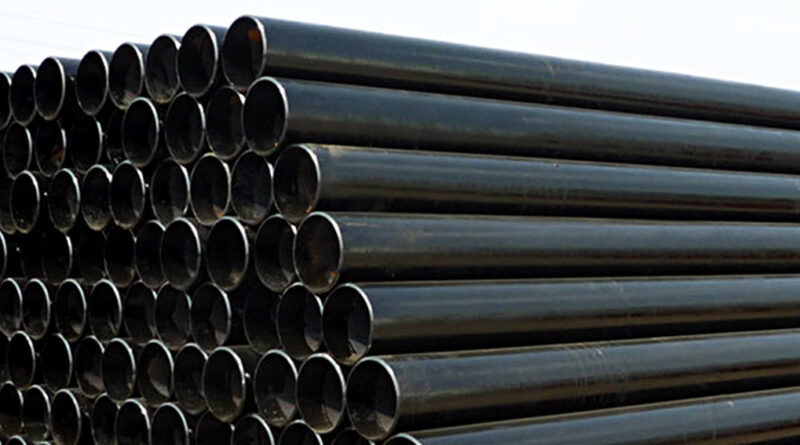Common Grades of Carbon Steel Tubes and Their Applications
Carbon steel tubes are widely used in various industries due to their strength, durability, and cost-effectiveness. These tubes are made from an alloy of iron and carbon, offering excellent mechanical properties for different applications. Depending on the carbon content and additional alloying elements, carbon steel tubes are classified into different grades, each designed for specific uses. Understanding these grades and their applications can help in choosing the right material for industrial and commercial needs.
Grades of Carbon Steel Tubes
Carbon steel tubes are categorized into low, medium, and high-carbon steel based on their carbon content. Each grade has unique properties suited for different applications.
1. Low-Carbon Steel Tubes (Mild Steel Tubes)
Low-carbon steel tubes contain up to 0.3% carbon, making them soft, ductile, and easy to weld. These tubes are commonly used in:
- Plumbing and Water Pipelines: Used for transporting water in residential and commercial buildings.
- Automotive Industry: Found in fuel lines, exhaust systems, and chassis components.
- Construction and Infrastructure: Used in structural frameworks, bridges, and fencing.
- HVAC Systems: Ideal for air conditioning and ventilation ducts.
Their low cost and high flexibility make them a preferred choice for general engineering applications.
2. Medium-Carbon Steel Tubes
With a carbon content between 0.3% and 0.6%, medium-carbon steel tubes offer higher strength and wear resistance than low-carbon steel. These tubes are used in:
- Automotive and Machinery Parts: Ideal for crankshafts, gears, and axles.
- Oil and Gas Industry: Used in pipelines, heat exchangers, and drilling equipment.
- Structural Applications: Employed in bridges, heavy-duty machinery, and construction supports.
Medium-carbon steel tubes provide a balance between strength and ductility, making them suitable for applications that require durability and moderate flexibility.
3. High-Carbon Steel Tubes
High-carbon steel tubes contain more than 0.6% carbon, making them extremely strong and hard but less ductile. These tubes are commonly used in:
- Cutting Tools and Blades: Due to their high hardness and wear resistance.
- Industrial Equipment: Used in manufacturing heavy-duty components for high-stress environments.
- Boiler and Pressure Vessels: Ideal for high-temperature and high-pressure applications.
High-carbon steel tubes are less flexible but provide excellent strength, making them suitable for specialized applications that require extreme hardness.
4. Alloy Carbon Steel Tubes
Alloy carbon steel tubes contain additional elements like manganese, chromium, or molybdenum to enhance their properties. These tubes are widely used in:
- Power Plants and Boilers: Designed for high-temperature and pressure conditions.
- Aerospace and Defense: Used in aircraft structures and military equipment.
- Chemical Processing Plants: Ideal for transporting corrosive fluids and gases.
The addition of alloying elements improves corrosion resistance, strength, and toughness, making these tubes ideal for critical applications.
Applications of Carbon Steel Tubes
1. Oil and Gas Industry
Carbon steel tubes are extensively used in the oil and gas sector for drilling, transportation, and refining. They can withstand high pressure and temperature, making them suitable for pipelines, heat exchangers, and refinery equipment.
2. Construction and Structural Engineering
The strength and load-bearing capacity of carbon steel tubes make them essential for construction applications. They are used in building frames, bridges, towers, and scaffolding due to their durability and ease of fabrication.
3. Automotive Industry
In the automotive sector, carbon steel tubes are used for manufacturing exhaust systems, fuel lines, and chassis components. Their strength and impact resistance ensure the safety and longevity of vehicles.
4. Power Generation
Boilers and steam pipelines in power plants require carbon steel tubes that can handle high temperatures and pressures. Medium and high-carbon steel tubes are preferred for their heat resistance and durability.
5. Mechanical and Heavy Equipment
Industrial machinery and equipment rely on carbon steel tubes for hydraulic systems, cylinders, and structural components. Their ability to withstand heavy loads makes them suitable for demanding applications.
6. Water and Sewage Systems
Carbon steel tubes are commonly used in water distribution and sewage treatment plants. Their corrosion resistance and strength ensure reliable performance in underground and above-ground pipelines.
Why Choose Carbon Steel Tubes?
- High Strength: Capable of withstanding extreme pressure and mechanical stress.
- Cost-Effective: More affordable compared to stainless steel and other alloys.
- Versatile Applications: Used across various industries, including construction, oil and gas, and automotive.
- Durability: Resistant to wear, impact, and temperature fluctuations.
- Easy Fabrication: Can be welded, cut, and shaped for different uses.
Conclusion
Carbon steel tubes are an essential component in many industries due to their strength, durability, and cost efficiency. Different grades of carbon steel tubes are available, each suited for specific applications. Whether used in construction, automotive, power generation, or oil and gas, these tubes provide reliable performance and long-term benefits. Choosing the right grade ensures the best results for industrial and commercial applications.




